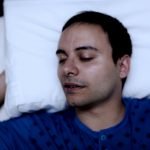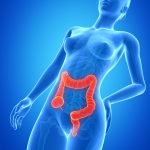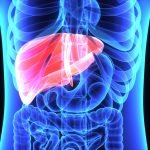Phytoestrogens: Varying Effects Across a Lifespan
Student Scholarship – 2nd Place Research Review
Allison Wills & Fraser Smith, MATD, ND
Phytoestrogens are a controversial topic in today’s world. Are they a health food or are they a toxic substance? The answer may lie in the complex nature of phytoestrogens and how they interact with the dynamic processes of our own bodies.
Phytoestrogens – A Brief Review
Phytoestrogens are naturally occurring plant-derived phenolic compounds that are present in the majority of diets, and in infant formulas, throughout the world. One of the most well-known groups of phytoestrogens is isoflavones, including the well-studied genistein, found in high amounts in soy and other legumes. Another common source of phytoestrogens is lignans, found in flaxseeds.
These constituents act on estrogen receptors (ER)α and ERβ, producing various effects throughout the body. After binding to estrogen receptors, they act as selective estrogen receptor modulators, depending on individual endogenous hormone levels, phase of life, and target tissues.1
ERβ is widely distributed in the body, but is especially rich in tissues such as prostate, skin, brain, lung, bone, bladder, blood vessels, and adipose.2 Phytoestrogens have been shown to have up to 20 times greater affinity for ERβ than for ERα.3 In human studies, ERβ has been shown to suppress proliferation of breast cancer cells when activated, whereas ERα may drive proliferation.4
In addition to acting on estrogen receptors, genistein activates PPARγ. Activation of PPARγ is involved in the apoptosis of cancer cells, insulin sensitivity, regulation of inflammation, adipogenesis, and is the target for many pharmaceuticals targeting diabetes, cancer, and atherosclerosis. At higher concentrations, genistein leads to PPARγ pathway activation, demonstrating another mechanism that may help explain soy’s inhibitory effects on estrogen receptor-positive cancer cells.5 The balance of activation between PPARγ and estrogen receptors may determine the net effect of phytoestrogenic compounds.
The distribution of estrogen receptors can also change through one’s life, exhibiting different patterns in the neonatal growth period versus adulthood; as a result, these receptors likely have a variety of roles in reproductive, behavioral, and neuroendocrine functions across one’s lifespan.2,3
Several traditional medicine systems advocate the importance of eating in accordance with the cycles of the earth. This train of thought can be expanded to consider eating in accordance with the cycles of our own bodies.
Neonatal Period
Soy-based infant formulas have become increasingly popular in recent years due to the perceived health benefits of soy. The most prevalent exposure to phytoestrogens during this sensitive developmental period occurs via soy-based infant formulas. These formulas contain approximately 40 μg total isoflavones per gram, resulting in circulating phytoestrogen concentrations of approximately 1 μg/mL; this represents 12 000 to 22 000 times that of endogenous estrogen concentration in neonates.6 In rodents, high doses of genistein administered subcutaneously (in doses comparable to a serving size of soy-based formula isoflavones) to newborn pups were found to alter ovarian differentiation, reduce fertility, and promote uterine cancer later in life.1 However, another animal study found that genistein consumption during the neonatal development period was associated with a reduced breast cancer risk later in life likely due to protein tyrosine kinase (PTK) inhibition and long-term downregulation of erbB2 [oncogene] expression by the phytoestrogens.7 These 2 animal studies suggest that the effects of phytoestrogens may vary within the neonatal period, between newborns and developing neonates at 22-28 days old, and that newborns may be more sensitive to their estrogenic effects.
The isoflavonoid genistein has been shown to possess dose-dependent characteristics that are influenced by the timing of exposure and endogenous estrogen levels. Low doses of genistein were shown to have an estrogenic effect in newborn rats by sensitizing the pituitary to GnRH, which promotes an increase in luteinizing hormone (LH) (necessary for the ovulation).8 In contrast, high doses of genistein had the opposite effect.8 The dose-dependent relationship and timing of administration may explain the conflicting studies showing both precocious and delayed puberty in girls as a result of phytoestrogen consumption during the developmental growth period.9-12
Genistein is known to have goitrogenic properties, slowing the enzyme thyroid peroxidase, an essential enzyme for thyroid hormone synthesis. Infants fed soy formulas have been shown to have an increased risk for autoimmune thyroid disease later in life when compared with breast-fed infants.13
Childbearing Age
The selective estrogen receptor modulator actions of phytoestrogens produce different outcomes depending on endogenous hormone concentrations. In women of childbearing age, when endogenous estrogen levels are high, phytoestrogens have been shown to exert an anti-estrogenic effect.14 Among healthy women of reproductive age, raw flaxseed was found to lengthen the luteal phase but did not change the menstrual cycle length, and an increased progesterone: estradiol ratio was observed in the luteal phase.14
Phytoestrogens have also been found to stimulate the production of sex hormone-binding globulin (SHBG) in liver cells.15 By increasing the amount of SHBG in the plasma,16 the amount of free (unbound) endogenous hormones in circulation is decreased. This could be problematic in individuals with already high levels of SHBG, such as females prior to puberty and women on birth control.
However, for individuals with low SHBG levels, such as in polycystic ovarian syndrome (PCOS), phytoestrogen consumption may be beneficial. In women with PCOS, 3 months of genistein exposure was found to favorably decrease levels of testosterone, DHEAS, LH and LDL,17 which may be explained by the various effects of genistein in the body, including SHBG synthesis16 and inhibition of 17β-hydroxysteroid dehydrogenase (HSD) (converts androstenedione to testosterone) and 5α-reductase (converts testosterone to dihydrotestosterone).18 Although the study did not measure SHBG or specify free vs bound fractions of estradiol and testosterone, the stimulating effect on SHBG and the inhibitory effect of isoflavones on 5α-reductase and 17β-HSD enzymes would be expected to benefit women with PCOS.
Postmenopause
While phytoestrogens may exert anti-estrogenic effects in the presence of high estrogen, the opposite is true when estrogen levels are low. In postmenopausal women, phytoestrogenic lignans have been shown to exert an estrogenic effect. For example, the consumption of genistein and flaxseed lignans produced estrogenic effects in postmenopausal women, including an increase in vaginal cell maturation and a reduction in hot flashes.15
Phytoestrogens also have effects independent of estrogen receptors. Isoflavones, specifically genistein, have been found to inhibit PTK, which acts on growth factors involved in the pathways of cell growth and proliferation19; this may, in turn, slow tumor growth and decrease the risk of cancer. PTKs are highly expressed in the hippocampus, and the phosphoregulation of PTKs is considered an important factor in neuronal plasticity repair.20 High doses of genistein may suppress PTK activity in the brain, thereby exerting a neuroprotective effect20 and improving cognitive function in postmenopausal women.21 Isoflavones may also exert additional neuroprotective effects through their antioxidant and anti-inflammatory properties.22
The various properties of phytoestrogens may also make them beneficial for type II diabetics. For example, soy protein and isoflavone consumption has been shown to decrease levels of insulin resistance, HbA1c, total cholesterol, LDL-C, and the LDL/HDL-C ratio, thereby improving glycemic control and reducing the risk of cardiovascular disease.23
In one study, urinary excretion of equol (a metabolite of daidzein) showed a clear inverse correlation with coronary heart disease (CHD) in women,24 though there was no relationship observed between CHD and total urinary excretion of isoflavonoids. The relationship between heart disease and equol but not total isoflavonoids may be influenced by an individual’s ability to bio-convert the isoflavones genistein and daidzein. For example, the isoflavone daidzein is fermented to the more potent equol in the gut by intestinal microflora. However, the bioconversion of these isoflavones by glucosidases are only readily converted in approximately 30-50% of humans, as the process is largely dependent upon genetics, gut microflora, and diet.25
Summary
The health effects of phytoestrogens can vary, depending on genetics and the specific stage of a woman’s life. By being aware of this, we can better understand why much conflicting evidence exists regarding these phytonutrients.
There is a place and a time for everything, including our medicines and our foods. While consumption of soy-based formulas may cause harm in a developing neonate, phytoestrogens as part of a healthy diet in adulthood may help to decrease the risk of certain health conditions.
“Let food be thy medicine, and let thy medicine be thy food.” Hippocratic wisdom is a fundamental aspect of naturopathic philosophy. As with all medicines, improper use any agent can cause great harm, whereas appropriate doses and in appropriate individuals can be utilized to prevent disease by creating the conditions for health. By understanding how phytoestrogens affect the body based on life stage and unique hormonal balances, we can best utilize the medicine that nature has provided us.
REFERENCES:
- Patisaul HB, Jefferson W. The pros and cons of phytoestrogens. Front Neuroendocrinol. 2010;31(4):400-419.
- Omoto Y, Iwase H. Clinical significance of estrogen receptor β in breast and prostate cancer from biological aspects. Cancer Sci. 2015;106(4):337-343.
- Messina MJ, Loprinzi CL. Soy for breast cancer survivors: a critical review of the literature. J Nutr. 2001;131(11 Suppl):3095S-3108S.
- Fox EM, Davis RJ, Shupnik MA. ERbeta in breast cancer–onlooker, passive player, or active protector? Steroids. 2008;73(11):1039-1051.
- Dang ZC, Audinot V, Papapoulos SE, et al. Peroxisome proliferator-activated receptor gamma (PPARgamma ) as a molecular target for the soy phytoestrogen genistein. J Biol Chem. 2003;278(2):962-967.
- Patisaul HB. Phytoestrogen action in the adult and developing brain. J Neuroendocrinol. 2005;17(1):57-64.
- Peng JH, Zhu JD, Mi MT, et al. Prepubertal genistein exposure affects erbB2/Akt signal and reduces rat mammary tumorigenesis. Eur J Cancer Prev. 2010;19(2):110-119.
- Kim SH, Park MJ. Effects of phytoestrogen on sexual development. Korean J Pediatr. 2012;55(8):265-271.
- Kim SH, Park MJ. Effects of phytoestrogen on sexual development. Korean J Pediatr. 2012;55(8):265-271.
- Adgent MA, Daniels JL, Rogan WJ, et al. Early-life soy exposure and age at menarche. Paediatr Perinat Epidemiol. 2012;26(2):163-175.
- Wolff MS, Britton JA, Boguski L, et al. Environmental exposures and puberty in inner-city girls. Environ Res. 2008;107(3):393-400.
- Freni-Titulaer LW, Cordero JF, Haddock L, et al. Premature thelarche in Puerto Rico. A search for environmental factors. Am J Dis Child. 1986;140(12):1263-1267.
- Fort P, Moses N, Fasano M, et al. Breast and soy-formula feedings in early infancy and the prevalence of autoimmune thyroid disease in children. J Am Coll Nutr. 1990;9(2):164-167.
- Phipps WR, Martini MC, Lampe JW, et al. Effect of flax seed ingestion on the menstrual cycle. J Clin Endocrinol Metab. 1993;77(5):1215-1219.
- Romeo JT. Phytochemicals in Human Health Protection, Nutrition, and Plant Defense. New York, NY: Kluwer Academic/Plenum Publishers; 1999.
- Adlercreutz H, Höckerstedt K, Bannwart C, et al. Effect of dietary components, including lignans and phytoestrogens, on enterohepatic circulation and liver metabolism of estrogens and on sex hormone binding globulin (SHBG). J Steroid Biochem. 1987;27(4-6):1135-1144.
- Khani B, Mehrabian F, Khalesi E, Eshraghi A. Effect of soy phytoestrogen on metabolic and hormonal disturbance of women with polycystic ovary syndrome. J Res Med Sci. 2011;16(3):297-302.
- Evans BA, Griffiths K, Morton MS. Inhibition of 5 alpha-reductase in genital skin fibroblasts and prostate tissue by dietary lignans and isoflavonoids. J Endocrinol. 1995;147(2):295-302.
- Akiyama T, Ishida J, Nakagawa S, et al. Genistein, a specific inhibitor of tyrosine-specific protein kinases. J Biol Chem. 1987;262(12): 5592-5595.
- Linford NJ, Dorsa DM. 17beta-Estradiol and the phytoestrogen genistein attenuate neuronal apoptosis induced by the endoplasmic reticulum calcium-ATPase inhibitor thapsigargin. Steroids. 2002;67(13-14):1029-1040.
- Cheng PF, Chen JJ, Zhou XY, et al. Do soy isoflavones improve cognitive function in postmenopausal women? A meta-analysis. Menopause. 2015;22(2):198-206.
- Yu J, Bi X, Yu B, Chen D. Isoflavones: Anti-Inflammatory Benefit and Possible Caveats. Nutrients. 2016;8(6).
- Jayagopal V, Albertazzi P, Kilpatrick ES, et al. Beneficial effects of soy phytoestrogen intake in postmenopausal women with type 2 diabetes. Diabetes Care. 2002;25(10):1709-1714.
- Zhang X, Gao YT, Yang G, et al. Urinary isoflavonoids and risk of coronary heart disease. Int J Epidemiol. 2012;41(5):1367-1375.
- Lampe JW. Is equol the key to the efficacy of soy foods? Am J Clin Nutr. 2009;89(5):1664S-1667S.
 Allison Wills is a 3rd-year naturopathic medical student at the National University of Health Sciences in Lombard, Illinois. She graduated from San Diego State University in 2012 with a BS in kinesiology, with an emphasis on fitness, nutrition, and health, and a minor in philosophy. She has a strong passion for reproductive health and dermatology. Allison has taught yoga for over 6 years and plans to incorporate mind-body medicine into her future practice.
Allison Wills is a 3rd-year naturopathic medical student at the National University of Health Sciences in Lombard, Illinois. She graduated from San Diego State University in 2012 with a BS in kinesiology, with an emphasis on fitness, nutrition, and health, and a minor in philosophy. She has a strong passion for reproductive health and dermatology. Allison has taught yoga for over 6 years and plans to incorporate mind-body medicine into her future practice.
 Fraser Smith, MATD, ND, is the Assistant Dean of Naturopathic Medicine and Professor at the National University of Health Sciences (NUHS) in Lombard, Illinois. Prior to working at NUHS, he served as Dean of Naturopathic Medicine at CCNM in Toronto, Ontario. Dr Smith is a licensed naturopathic physician (Vermont) and author of several books, including the textbook Introduction to Principles and Practices of Naturopathic Medicine.
Fraser Smith, MATD, ND, is the Assistant Dean of Naturopathic Medicine and Professor at the National University of Health Sciences (NUHS) in Lombard, Illinois. Prior to working at NUHS, he served as Dean of Naturopathic Medicine at CCNM in Toronto, Ontario. Dr Smith is a licensed naturopathic physician (Vermont) and author of several books, including the textbook Introduction to Principles and Practices of Naturopathic Medicine.









